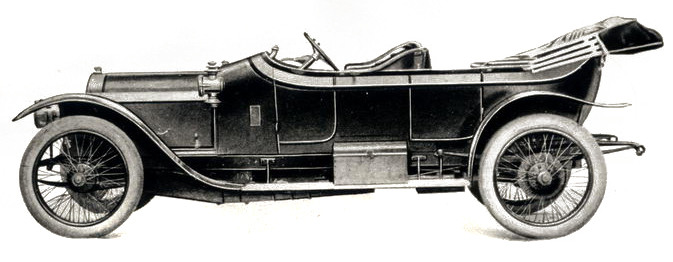Turcat-Méry
Leon Turcat of Marseille, enjoyed recalling the story sixty years later when he visited with Armand Peugeot. He had asked the automotive pioneer regarding the future of the horseless carriage and that Mme Peugeot had remarked that he husband was “dead keen on motor cars.” His brother in law, Alphonse Méry had taken delivery of a Panhard et Levassor and a Peugeot. Then he and Simon Méry, both engineers, ran these cars through some trials to see if the current leaders in the art of automobiles could be improved upon and that these improvements could form the basis for a company. They built a car of their own design which had a 2.6-litre, four-cylinder, five-speed car with electric ignition, radiators at each end of the engine and two speeds in reverse.
Thus in 1899, when the car was ready for sale, they founded Turcat-Méry et Cie. They produced cars whose slogan was The Car of the Connoisseur but operations remained small and their future looked gloomy until a bit of luck struck and they established a partnership with Baron Adrien de Turckheim of the De Dietrich and Lorraine-Dietrich company, who was looking for a suitable design to be built by de Dietrich of Lunéville to replace the outdated Bollee models which they were currently producing.
On the advice of the motoring journalist, Paul Meyan and over several months of deliberation and a demonstration ride in the Turcat-Méry he signed a flexible licence agreement in 1902, under which Turcat and Méry agreed to design automobiles for the French branch of de Dietrich, while retaining their own motor factory in Marseille. They would receive 5% of the selling price for any car Turckheim sold. Eventually they accepted positions with the de Dietrich company at Lunéville while maintaining their own small operation. When Turckheim broke with the German branch and set up Lorraine-Dietrich Turcat and Méry continued their partnership.

In 1909 the Automobile Club de Monaco (Sport Automobile Velocipedique Monegasque) started planning a car rally at the behest of Albert I, Prince of Monaco. The Monte Carlo Rally was to start at points all over Europe and converge on Monte Carlo.
On January 21, 1911 twenyt-three cars set out from eleven different locations and Henri Rougier was among the nine who left Paris to cover a 1,020 kilometres (634 mi) route. The event was won by Rougier in a Turcat-Méry 25 Hp. The rally comprised both driving and then somewhat arbitrary judging based on the elegance of the car, passenger comfort and the condition in which it arrived in the principality. A certain Captain Von Esmach who had arrived first fro Berlin was relagated to sixth. The outcry of scandal when the results were published the following day changed nothing, so Rougier was proclaimed the first winner. Second place went to a driver named Aspaigu in a Gobron and third to Jules Beutler in a Martini.
Turcat-Méry’s liaison with Lorraine-Dietrich lasted until the outbreak of World War I in 1914. Turcat-Méry ceased production in 1928.















